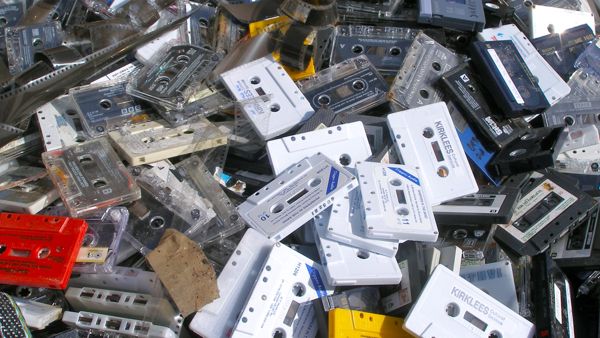
Digital formats are great and the ease of access and distribution that an Audio CD and a Video DVD offers is fantastic at the moment with cheap players, recorders and personal computers. In the audio and video tape transfer business, getting your business website to rank well in the search engines for key phrases such as ‘copy tape to cd’ or ‘convert video to dvd’ should get you a steady stream of enquiries from people who, primarily, can’t access their tapes any more. The preservation of the valuable recording is usually perceived to be CD or the DVD.
My concerns with the ‘…to CD’ and ‘…to DVD’ process are:
- Optical Media that can be burnt using computers, CDr and DVDr, are not as reliable as commercially produced or ‘stamped’ discs and their quality and longevity can vary between different manufacturers.
- The digital video stored on a DVD Video is a lossy compressed format that depending on the original footage and if pushed for too much running time can easily make the digital transfer look much worse than the original – not a good reason to transfer the tape!
- The everyday nature of audio and video discs and some of the domestic technology we now have has conspired to make what is and can be a complex, time consuming and often problematic process too simple in the eyes of many people.
Since the early marketing of the compact disc in the ’80s by spreading jam on it to highlight its resilience compared to vinyl or tape, many of us have been taken in by this and have a skewed belief on the longevity of CD and DVD optical media. In fact optical media can degrade and become unreadable and unplayable in a very short space of time even with good storage practices. Tape based storage formats of course have their numerous problems but they can often be incredibly resilient over time even in under poor storage conditions. When tape does degrade it is rare event when it cannot be treated and made playable .
CDr and DVDr Longevity
Optical media that can be burnt form CD / DVD writers uses a dye that the laser alters to create pits that are read back as digital data. CD and DVDr discs use different dyes due to the different data storage needs. The dye can be affected by bright sunlight and compared to commercial or ‘stamped’ optical media it is not as reliable.
In an exhaustive Library of Congress report, http://www.loc.gov/preservation/resources/rt/NIST_LC_OpticalDiscLongevity.pdf ‘good quality’ CDR media was expected to last ‘several decades’ and be more reliable than DVDr media:
It has been speculated that the archival quality of CD is superior to that of DVD. The basis for this lay with the physical differences in CD and DVD optical media and the maturity of the technology. In particular, the size of the bit markings in CD media not only reduces the relative effect of media or dye degradation, but also means that more stable, less sensitive dye may be used.
Out with old, in with the new
The march of technology can cost us money while making huge profits too. This of the CD reissues of old back catalogue albums, the pressure to replace vinyl collections with CDs, video tape collections with DVDs or CRT televisions with LCD or plasma screens. New technology is marketed as ‘better’ in many ways, yet it can be worse too.


Keep data preserved on multple media formats preferrably with some form of connection like usb or network connectivity. External hd usb3 lto tape backup system on network, blu ray writers etc etc.